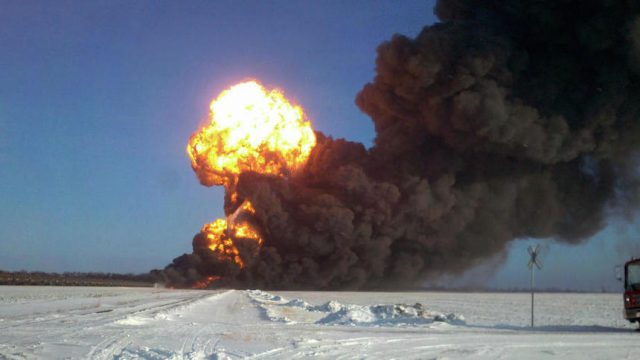It Would Be a Mistake to End North Dakota’s Rail Inspection Program

A few years ago a series of train derailments – some of them explosive – involving oil shipments were making national headlines. They were hyped by the enemies of oil development who are always looking for an excuse to “keep it in the ground,” but the incidents were a valid public safety concern too.
Just ask the citizens of Casselton who saw one such derailment result in a mushroom cloud along the tracks near their community. Tracks which run through the heart of their community.
So state lawmakers, responding to a push from Public Service Commissioner Julie Fedorchak, responded by creating a state program of rail and mechanical inspections to complement those done by the feds through the Federal Railroad Administration. Many, including this observer, have felt that the feds weren’t doing enough to inspect the trains and the train cars and the rails they run on. The state-backed inspections would help cover more ground.
And it’s worked. I interviewed Fedorchak yesterday on my radio show (audio below) and she noted that the state inspects have accomplished meaningful work.
[mks_pullquote align=”right” width=”300″ size=”24″ bg_color=”#ffffff” txt_color=”#000000″]”We’re finding issues that could lead to derailments,” Fedorchak told me, referring specifically to one incident where a train already inspected by BNSF was found by a state inspector to have 11 oil cars with broken side bearings. These cars were immediately taken out of service.[/mks_pullquote]
The mechanical inspector the state has employed has, so far, found 875 defects and 38 violations since he began work (the latter is a more serious sort of issue than the former).
“We’re finding issues that could lead to derailments,” Fedorchak told me, referring specifically to one incident where a train already inspected by BNSF was found by a state inspector to have 11 oil cars with broken side bearings. These cars were immediately taken out of service.
Fedorchak said the state “can’t prove a negative” when it comes to whether or not they’ve prevented a derailment, but said that finding these problems makes rail shipments here safer.
Yet some in the Legislature want to end the program. Including the majority leaders in the House and the Senate.
“I think it will run its course, and when it’s done, my gut feeling is we won’t re-up it,” Senate Majority Leader Rich Wardner told the Associated Press.
House Majority Leader Al Carlson, meanwhile, called the program an overreaction. “Every other program — once you start them, everybody wants to keep them. That’s government,” he told the AP.
I’m as skeptical of government programs as the next guy, but the cost of this program is about $300,000 per year, or about $600,000 per biennium. That’s a small amount of money for some real peace of mind when it comes to rail safety.
All the more so when you consider that rail capacity is key not just to the energy industry but to agriculture as well.
“This is a valuable program for the state,” Fedorchak told me.
“This isn’t a duplication of federal efforts,” she added. “This is an increase in inspections.”
She’s right. Lawmakers would be foolish not to continue this program.
[fcc_jw_podcast key=”Q4abwAS5″]




